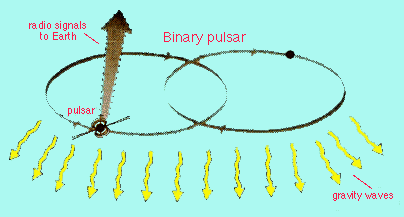|
|
|
Gravity waves from a binary pulsar. As the two neutron stars orbit each other, the system radiates gravity waves. Because the waves carry off energy, the stars get closer and the orbital period decreases. By precise timing of the arrival of the pulses, radio astronomers can measure this decrease and confirm this phenomenon, which was predicted by Einstein's theory of general relativity. |
